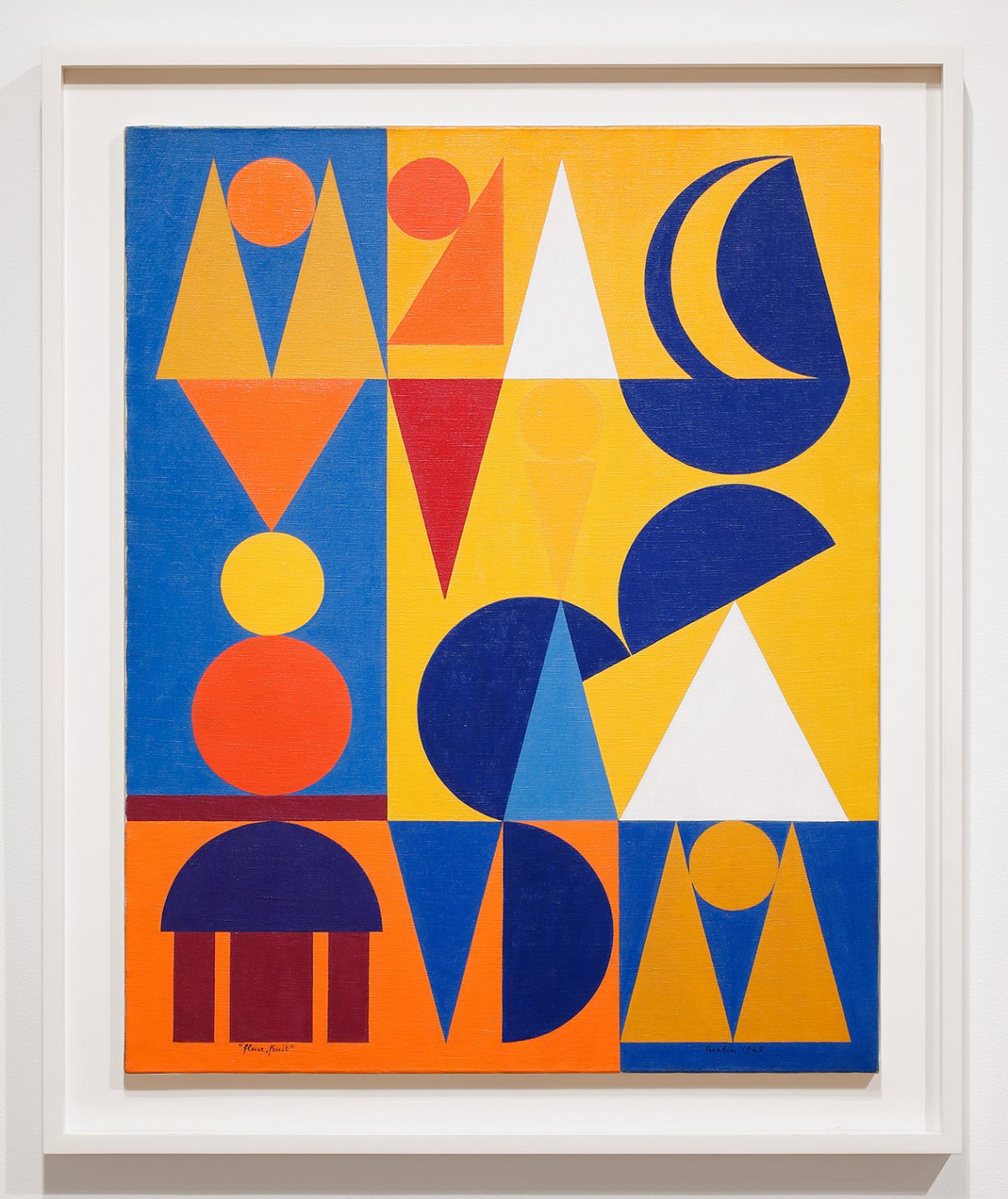Virtual Tour with Susan Kegel

SAM Docent, Susan Kegel is taking us downtown to the Seattle Art Museum to do some close looking at an abstract painting by Auguste Herbin on this virtual tour. Kegel has been a school tour docent at SAM since 2007. She loves touring with students because they have fresh and amazing insights about the art, and are not afraid to share them.
Auguste Herbin’s painting Fleur (Fruit) (translated to Flower and Fruit) is abstract. Rather than painting flowers and fruit exactly how they look, Herbin chose to think about the essence of them, focusing on color and shape. Mathematicians make things abstract, too. For example, the number three is an abstraction. We can’t see three! We can see three trees, three cats, or three triangles, but three-ness is a mathematical abstraction. Abstraction can sometimes be confusing and unapproachable, but we can explore abstraction by borrowing a simple approach from Dan Finkel and Katherine Cooke of Math for Love. Take a look at the artwork above and ask three questions: What repeats? How many? What if?
You can try this at home. What repeats?
I see lots of shapes that repeat: triangles, semi-circles, circles, and rectangles. Some stand out because Herbin used strongly contrasting colors—warm colors layered on top of cool and vice versa. Other shapes are more subtle. For example, did you see the orange rectangle in the lower left side?
Let’s look closely at the triangles. Triangles are shapes with three sides, but the lengths of the sides can vary. Some triangles appear to have two sides of the same length—these are isosceles triangles. Equilateral triangles have all three sides of the same length. Can you find any triangles with no matching sides? There are three: one is orange, one is blue, and one is yellow. These are scalene triangles.
How many triangles are there? This is tricky because there are also implied triangles, where the artist has not quite finished the edges but your eye fills in the missing parts. Shall we count? I see 14.
Besides shapes, what else repeats? What about the colors? Are there any colors that don’t repeat? Why do you suppose the artist chose to have only one sky blue shape?
Now, let’s imagine what if: what if the painting were hung upside down?
When right-side up, the shapes seem to be balanced on top of each other or on top of imaginary horizontal lines. When upside down, the shapes are tumbling down towards the floor. It feels quite different to me. What differences do you notice when imagine the painting upside-down?
We typically learn mathematics starting with physical things, such as counting apples or blocks. Only later do we learn how to manipulate the abstract numbers. Artists often progress in the same way, first learning how to draw realistically before experimenting with more abstract styles. Herbin’s early works were much more realistic.
– Susan Kegel, SAM Docent